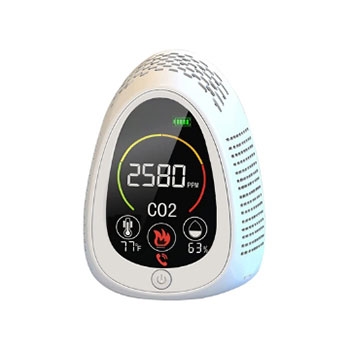As an essential fire detection device, smoke detectors have found widespread application in modern buildings. The primary function of a smoke detector is to promptly detect smoke before a fire occurs, emitting an alarm signal to alert individuals to take safety measures and prevent losses caused by a fire. So, what is a smoke detector? Below, sisco will explore the classification, principles, characteristics and applications of smoke detector.
Classification of Smoke Detectors
Smoke detectors come in various types, and based on detection principles, they can be categorized into three major classes:
- Smoke detectors utilizing the chemical properties: examples include semiconductor smoke detectors and contact combustion smoke detectors.
- Smoke detectors utilizing physical properties: examples include heat conduction smoke detectors, light interference smoke detectors, and infrared sensors.
- Smoke detectors utilizing electrochemical properties: examples include current-type smoke detectors and potential-type gas sensors.
Working Principles of Smoke Detectors
Physical Principles
The physical principle of a smoke detector relies on the chemical reaction properties of gases. During the combustion of smoke, elements such as hydrogen, oxygen, and nitrogen are present. When these gases are adsorbed by particles in the smoke, the molecular weight changes, causing an ion flow that triggers the detector. This process is related to the principle of ion transport, where ions move in an electric field. When ions collide with gas molecules, secondary electrons are released, forming an ion flow. The detector can then determine the presence and severity of smoke based on the ion flow.
Electrical Principles
The electrical principles of a smoke detector refer to the internal circuit design of the detector and its linkage with other devices. The detector's internal circuit includes various electrical components such as resistors, currents, and voltages, providing functions such as detection, alarm, and reset. Generally, a smoke detector should be linked to at least three systems. The first is the power system, supplying the detector with power. The second is the linkage system, where the detector sends alarm signals to linked devices such as fire alarm control panels. The third is the local control system, allowing control over various parameters and functions of the detector itself.
Characteristics of Smoke Detectors
- Selective Detection: Capable of selectively detecting a specific type of smoke while not responding or responding minimally to coexisting smoke.
- High Sensitivity: Exhibits high sensitivity to the smoke being tested, effectively detecting smoke concentrations within the permissible range.
- Rapid Response: Shows a fast response to detection signals with good repeatability.

- Long-Term Stability: Demonstrates good stability in long-term operation.
- Long Service Life: Has a prolonged lifespan.
- Low Manufacturing Cost, Convenient Use, and Maintenance: Manufactured at a low cost and easy to use and maintain.
Applications of Smoke Detectors
The application of smoke detectors is extensive, with different types suitable for different scenarios. In indoor spaces such as public places, residences, shopping malls, offices, etc., optical smoke detectors are recommended because they can detect the black smoke generated in most fire situations. High-temperature flame detectors are suitable for fire detection in high-temperature environments. Additionally, in environments with flammable hazards, such as mines, power equipment, oil and gas storage and transportation, infrared flame detectors should be chosen as they can detect the infrared radiation produced during the combustion of flames.
In summary, the working principles of smoke detectors include both physical and electrical principles. The selection of detectors for different applications depends on the specific environmental requirements. In the future, as technology continues to advance, smoke detectors have broader prospects for applications, including smart control, wireless transmission, and more. We hope to continuously explore, refine, and elevate the technological level of smoke detectors to safeguard people's lives and safety.

